One thing is for certain if you paint then eventually an accident will occur and paint will get onto something you do not want it to be on. If you have paint on your hardwood floors that you want to remove without damaging the surface of the floor then this article may have the information you can use.
How to Remove Fresh Paint from Hardwood Floors
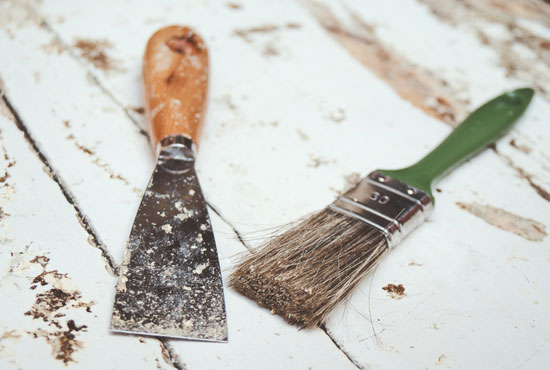
If the paint on the floor is very fresh then the removal will actually be very easy. The main thing you need to do is consider what type of paint has gotten on the floor. If you have water-based paint on the floor then soap and water can be used to wash it away. You may have to use a little elbow grease and rub pretty hard if the paint has started to dry, but do not give up you can get the paint off.
If you have oil-based paint on the floor then you are going to need turpentine, mineral spirits, or a commercial paint thinner/remover to get the paint up.
Things you need:
- Mineral spirits
- Cloth to apply the spirits
- Disposable gloves
- Bucket
- Warm water
- Sponge
- Dry cloth
Apply the Paint Thinner or Mineral Spirits
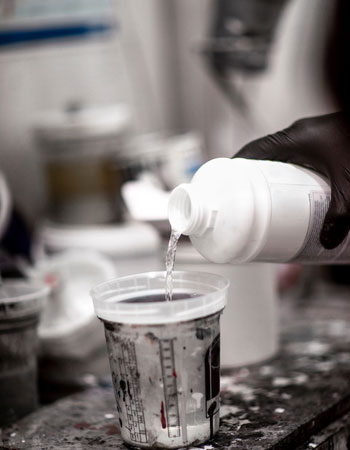
You want to make sure that you are wearing disposable gloves when you apply the mineral spirits to the cleaning cloth. You can pour the spirits directly onto the paint but you will use less of the chemical agent if you apply them to a rag and then apply the rag to the floor.
Rinse with Water
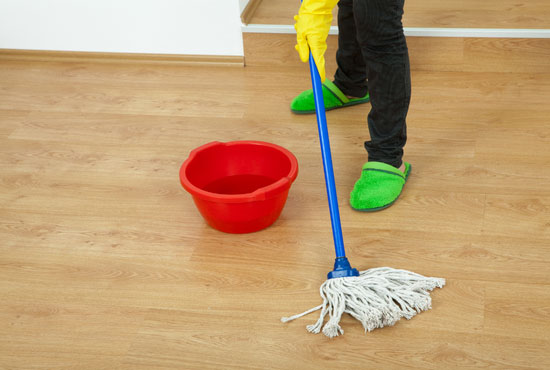
Once the mineral spirits have been applied to the area, and the paint has been freed from the floor surface, you will need to rinse the area with water. I suggest washing with soap and water, then using plain water to rinse.
Dry Rags
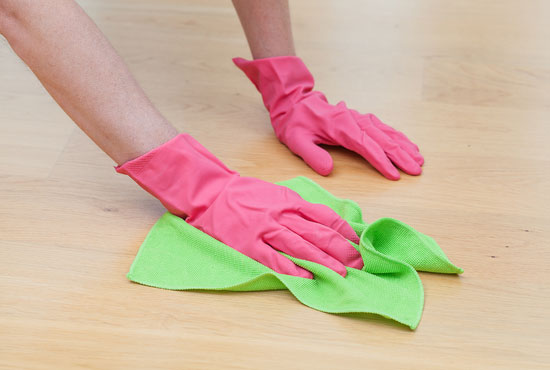
Use dry rags to dry the rinse water up as soon as you are finished. This drying will allow you to inspect the area and apply more paint thinner if needed. More often than not you will have to wash and rinse the area two or more times before it is pristine.
Removing Dried Paint from Wooden Floors
Most of the time we do not see the paint until it has already dried. Wet or moist paint is very easy to clean up because it has not adhered to the surface. Dried paint brings a new challenge to the removal from wood.
Using Non-Toxic Ingredients
Before you rush in with chemical components that could damage your floor or your skin takes the time to try non-toxic ingredients first. Often the non-toxic ingredients will effectively remove the paint and they are far less likely to do any damage to the floor.
There are several non-toxic ingredients that can be tried when you are cleaning up paint.
- Pure lemon juice
- White distilled vinegar
- Rubbing alcohol
Tools You Need When Removing Dried Paint from Hardwood Floors
Whether you use a non-toxic agent or a chemical agent there are a few tools you will need to have on hand to help you do this job
- A scraper or bladed tool
- A nylon scrub brush with medium to stiff bristles
- Bucket of water
- Sponge or rag
- Dry rags
- Disposable gloves to protect your hands
Tip: Wear disposable gloves even when you are applying non-toxic substances. The lemon juice and vinegar can both irritate your skin and they can cause your skin to dry out.
Dampen The Area
The first thing to do is dampen the area with lemon juice or vinegar. You really want to saturate the area with this substance.
Wait Few Minutes
Wait for about 20 minutes to give the lemon juice or vinegar time to work on the paint.
Scrape The Edges
Use the blade or scraping tool you have chosen and go around the edges of the paint gently trying to lift away the paint. If the non-toxic substance has loosened the bond the paint has then it will start to come up.
Scrub
If the paint begins to lift away when you try the blade then you can take your nylon-bristled scrub brush and vigorously scrub the area. Work from the outer edges to the center because the outer edges will be loosened and can be easier to lift up.
Rinse The Area
After scrubbing you will need to rinse the area with clean water. Apply the cleaning water with a sponge and then dry it up using dry cloths.
Repeat
There is a good chance that the procedure will need to be repeated several times before the entire amount of paint is removed. Do not get discouraged. Eventually, you will get the paint up.
Warning: If you push the edges of a blade or paint scraper too hard you may gouge or damage the wooden surface. Hold the blade or scraper at an angle, and gently push it against the edge of the paint.
Removing Wooden Paint Using a Heat Gun
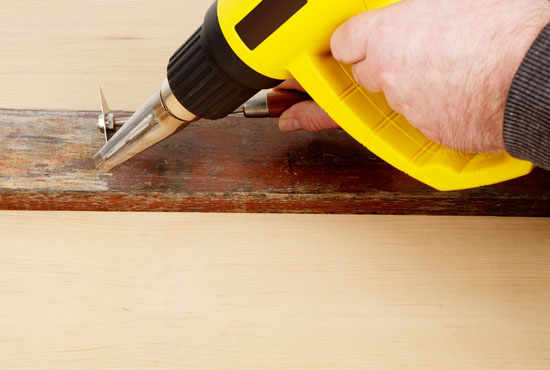
A heat gun is very effective at causing the paint to blister and crack so that it can be easily swept up or wiped away from a surface.
To use a heat gun to remove the paint you want to allow the gun the proper amount of time to heat up. This is usually no more than a minute or two.
Warning: Never use a heat gun without proper heat-resistant gloves to protect your hands from possible burns.
Hold the nozzle of the gun about two inches from the surface of the paint. Aim the gun at the edges of the paint spot first.
Pay close attention so you can see when the paint begins to blister. When the blistering begins you need to immediately use a scraper to lift off the paint. DO NOT let the paint sit in place until it hardens again.
Tip: Heat very small sections at a time so you do not heat more paint than you can keep removed.
Warning: Heat guns produce a high enough amount of heat to cause severe burn damage to human skin. Heat guns produce enough heat that they can cause the flammable surfaces to be ignited if the heat is aimed at the flammable surface for a prolonged amount of time.
Removing Paint Using Harsher Items
There are some dried-in-place paints that are not going to come up without the use of harsher chemicals or sandpaper.
When you decide that harsher chemical agents are required try to use the mildest one possible. Often people use the harshest chemicals they can find and end up damaging the surface the paint is on. I suggest you always try rubbing alcohol or mineral spirits before you try the really harsh agents.
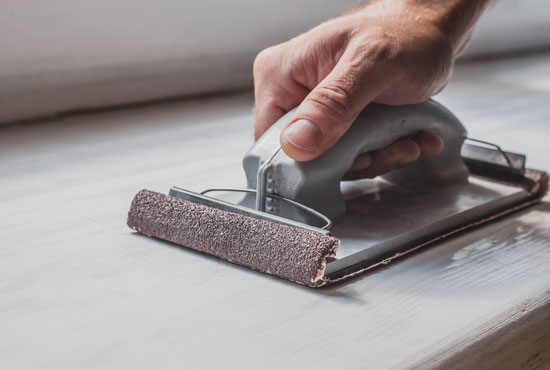
Protect Yourself Properly
If you are using a harsher agent to remove the paint you have to wear the proper physical protection and you have to make sure the area is ventilated properly. These factors are non-negotiable because they will prevent damage to your body and possibly serious damage like death.
- Disposable plastic gloves
- Mask or respirator to stop you from breathing in the harmful fumes
- Goggles or safety glasses that protect your eyes from both splashes and fumes
Apply the mineral spirits or denatured alcohol directly to the painted area. You want to place a generous amount of these items on the top of the paint paying close attention to make sure the edges are completely saturated.
Wait about 20 to 30 minutes for the paint to begin to be dissolved or loosened by the chemical.
Use the scraping blade and begin to lift up the loosened paint. Wipe the blade on a dry rag to remove the paint from the blade. When enough paint has been removed you can wipe the entire area with a dry rag to discern if all of the paint has been loosened.
If all of the paint appears to be loose wipe up the largest sections then use warm soapy water and a clean rag to clean away the chemical residue. After the area has been cleaned you will need to rinse water with no soap added so you can rinse the area.
Dry the area with dry rags, and if all of the paint is not gone you can repeat the process.
Knowing When to Sand
If the paint cannot be removed using non-toxic removers, chemical removers, or a heat gun the only recourse you have is to sand the area until you remove the paint. This sanding will be needed if the paint has soaked into the wood.
When you sand a wood floor you will damage the clear coat on the floor and you actually remove thin layers of the wood with the sander. Always sand using the finest grit of paper that effectively removes the paint for you and be very careful to sand only long enough to remove the paint. You can damage wood using a sander so it is imperative that you work slowly and sand as little as possible.
